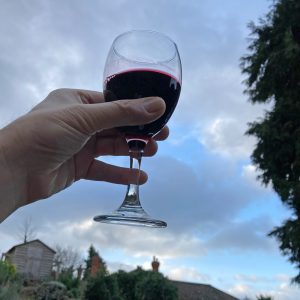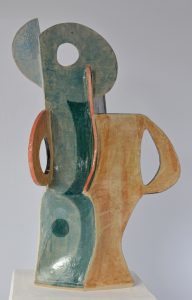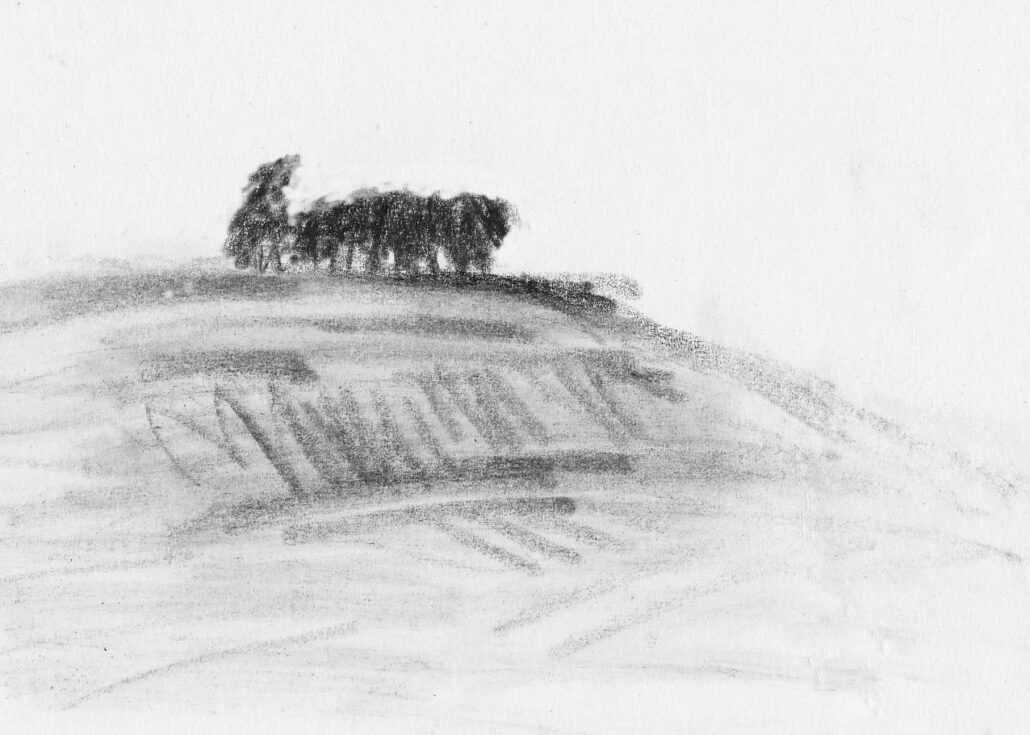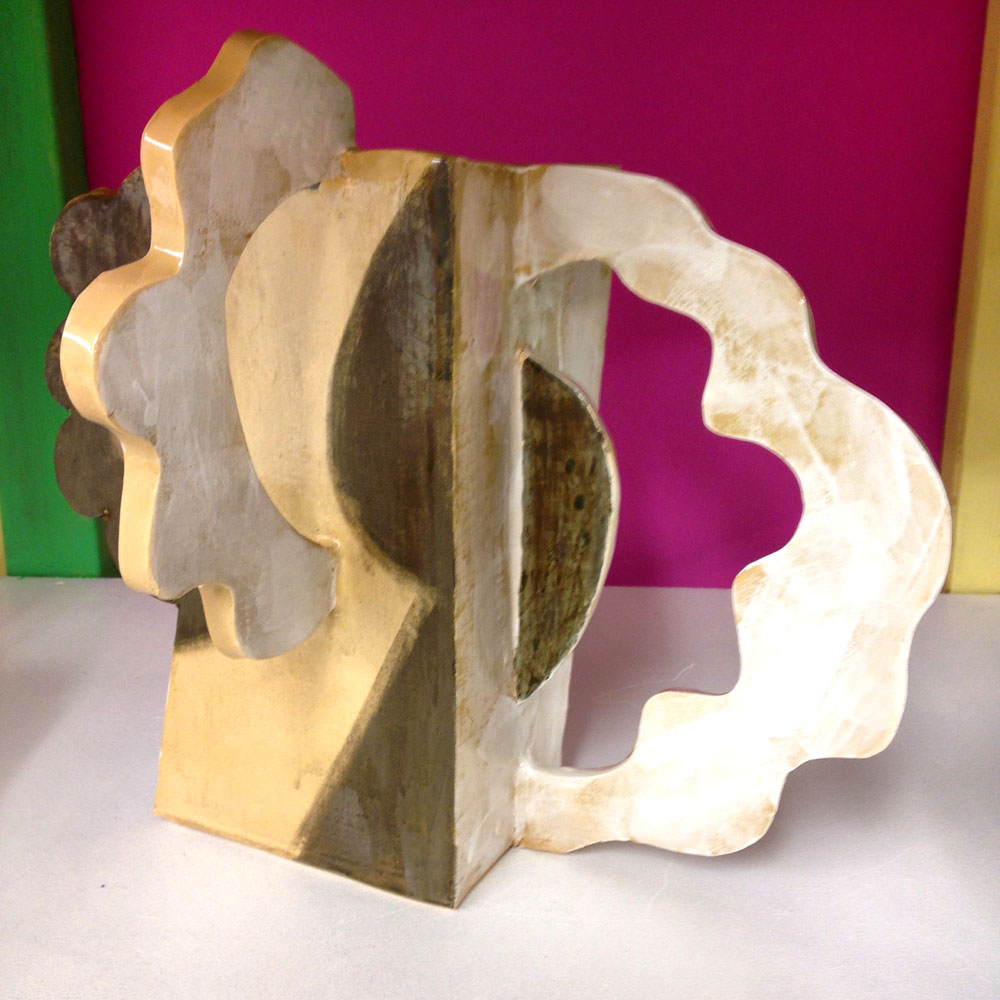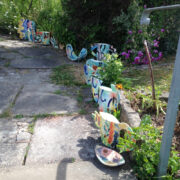Kiln Kat Kalamity
It may have been a cold early December afternoon, but a walk was needed up to CJ’s bench on Bradlow Hill, in part to clear the cobwebs, but mainly to meditate on the day’s disruptions and to put things in perspective. Kiln firings do sometimes go wrong – it’s not the end of the world. After a blissful state of Nirvana was attained, earthly feelings like suffering and desire disappeared, and the walk downhill was easy.
The main reason that pottery explodes in the kiln is residual moisture left in the clay body. Even when it appears bone dry. Once the kiln gets really hot, the moisture starts to turn into steam, and the steam expands very rapidly into any small air pockets in the clay and shatters the pottery. Kerblam! Though actually it’s usually no more than a loud pop.
This explosion was only discovered after a previous incident had taken place in the studio. This was announced by the layer of blue smoke that hung in space on entering the room, and which could be seen coiling up from the control panel behind the kiln. There was no panic, though Ziggy and Spiro were nowhere to be seen, and Thelonious offered little, if any, help.
Once everything had been turned off and the panel cover removed, the reasons were obvious: of the twelve terminals that connect up to the ends of the heating coils, three were sloppily connected and had corroded badly, deciding that they’d had quite enough, and the time had come to surrender.
Opening the kiln top then revealed that a ceramic cat had allowed its bottom to explode. This was just coincidence and had nothing to do with the terminals, though disappointing to my daughter-in-law, who made it. The original, successful, ceramic cat is modelled on Otto – here is a picture of Otto with his ceramic doppelganger Potto. They both live in London.
Otto himself has visited Ledbury and the studio and spent a weekend with the two adult humans for whom he is responsible. No rats were caught, he is too sedate for that, but the arrival of a third baby human may have complicated his ordered life, since for years cats have been unwittingly exploiting humans into taking care of them, by replicating the sound of a baby’s cry when they meow. They only meow when humans are around, the crafty creatures.
And cats have a long pedigree when it comes to ceramics. This beautiful stirrup-spout ceramic vessel was made by potters of Peru’s Moche culture sometime between the 4th – 7thcentury A.D. Moche artists were great observers of the natural world and depicted animals with a keen attention to detail. Here, the ceramicist captured the distinctive coat and leg markings, as well as the bushy tail, of the pampas cat. If you are in New York, you can see it at the Metropolitan Museum of Art.
Early Egyptians from wealthy families loved their mogs and dressed them in jewels and fed them treats. When the cats died, they were mummified. As a sign of mourning, the cat owners shaved off their eyebrows, and continued to mourn until their eyebrows grew back. Cats were so special that those who killed them, even by accident, were sentenced to death.
A piece that does not mention cats however, though woodlice make an appearance, is a story by yours truly in Litro Magazine. This is an online publication that (as it says on the website) “sits at the intersection of technology, the creative arts & literature. It provides a forum for new & experimental writing, whilst nurturing literary development”. It publishes work by first time authors through to Nobel laureates, providing readers with a perfect read for those with busy lives. So, it’s perfect for all of you, and if you want to read the online short story, then please just click here. It’s called Carpet Vandal.
Christmas is upon us, and we are all having to think of gifts. We’re here to help and to encourage you to buy the “one-off’, that singular piece, the handmade and irrepeatable – in other words, a stoneware vase or dish that catches the eye while at the same time being practical. Such as this large serving platter which you can order through The Chuffed Store.
Or else drop in on one of the galleries that you can find on our website – just click here.
To finish off, why not treat yourself to a full-throated Tom Jones cat song? The lyrics may not be much, but it’s a belter. Click here for some 70s nostalgia. Why do the girls in the audience scream when he sings that he likes “your pussycat nose”?
From everyone at Peter Arscott Ceramics, specially from Spiro, Thelonious and Ziggy, have a Happy Christmas and a better new year than we are all expecting.






































































